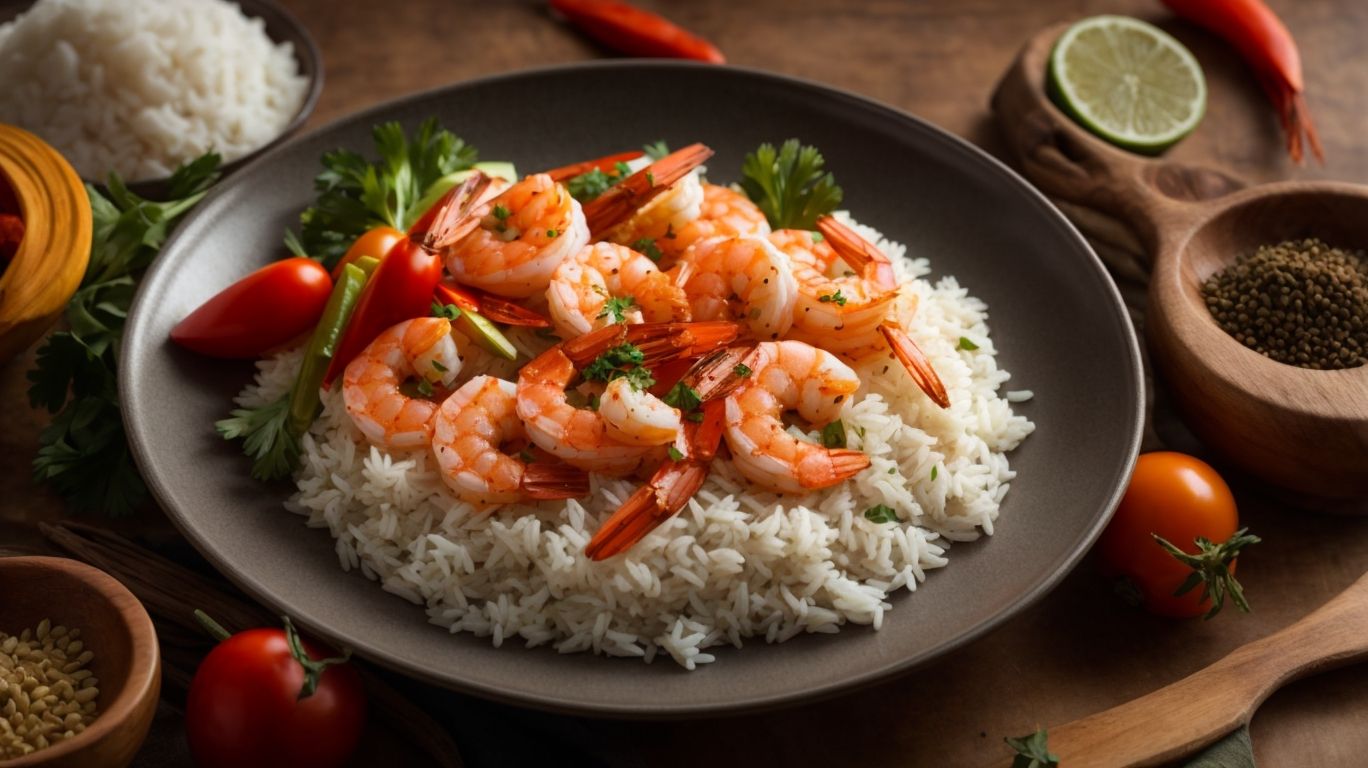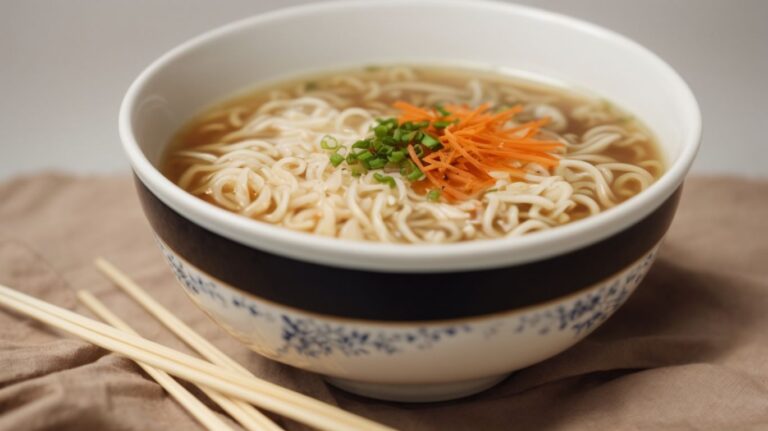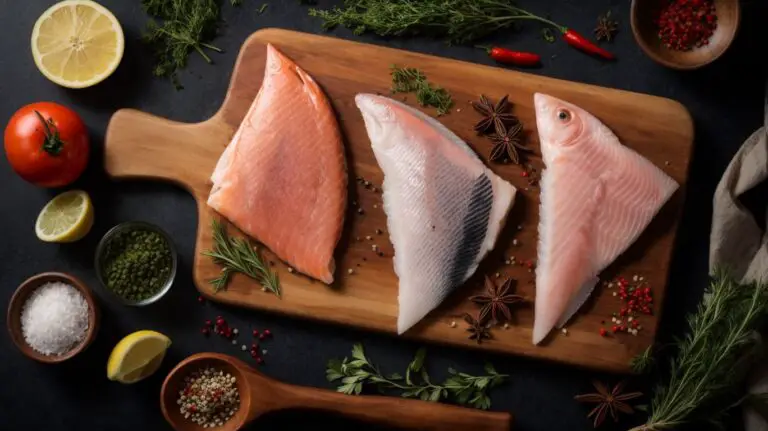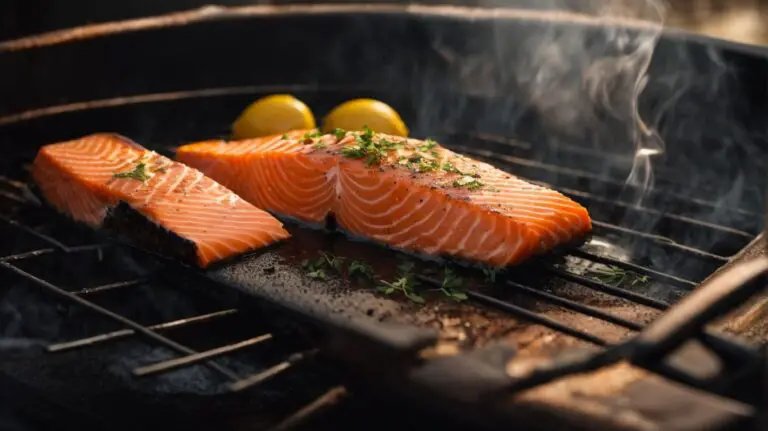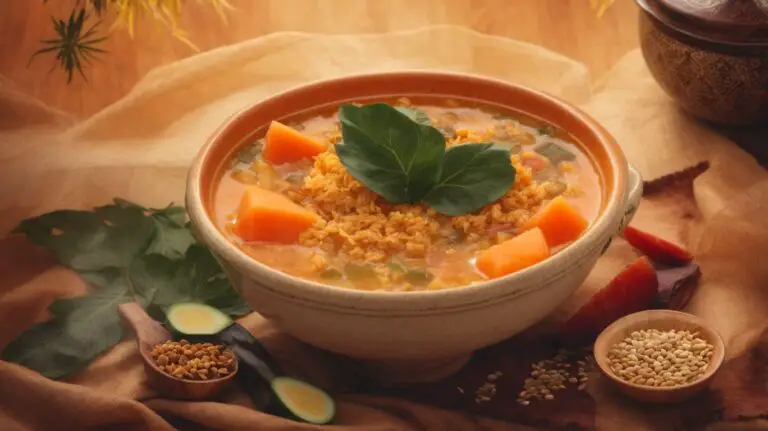How to Cook Shrimp for Fried Rice?
Craving a delicious and flavorful dish for dinner tonight? Look no further!
Learn how to make the perfect Shrimp Fried Rice with essential ingredients like shrimp, rice, and vegetables. Follow our step-by-step instructions for preparing and cooking the dish, along with some handy tips and tricks to elevate your Shrimp Fried Rice game.
Get ready to impress your taste buds with this mouthwatering recipe. Let’s get cooking!
Key Takeaways:
What Ingredients Do You Need?
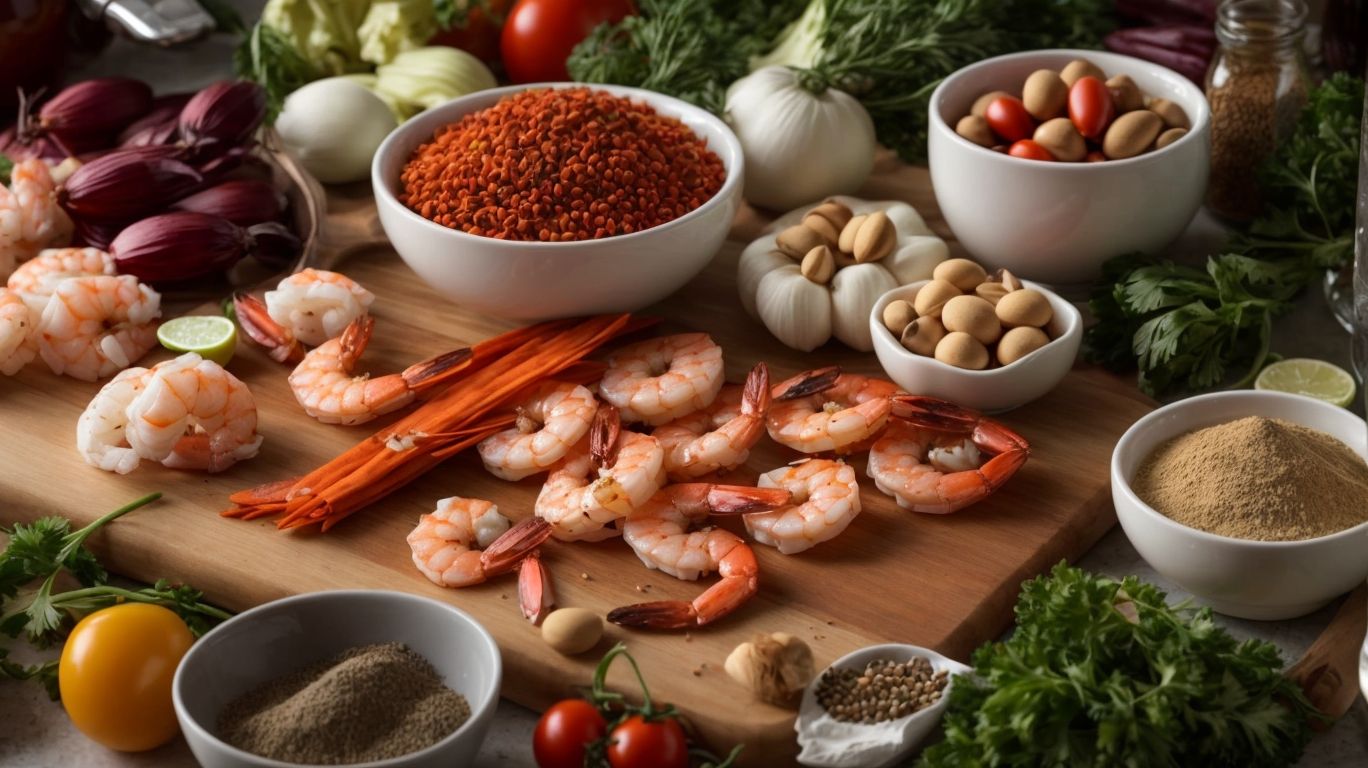
Credits: Poormet.Com – Mason Walker
To make a delicious shrimp fried rice, you will need a combination of key ingredients such as shrimp, rice, vegetables, eggs, soy sauce, garlic, and ginger.
Shrimp is the star of the dish, providing a rich, savory flavor and a satisfying protein element. It’s essential to use fresh, high-quality shrimp to ensure the best taste and texture. Look for large or jumbo shrimp for a more substantial bite in each mouthful.
Rice forms the base of the dish, acting as a canvas that soaks up all the flavors. Opt for long-grain white rice for the classic texture, but you can also experiment with brown rice or jasmine rice for a nuttier or fragrant twist.
Vegetables add color, nutrients, and crunch to the dish. Common choices include carrots, peas, bell peppers, and green onions. Feel free to customize with your favorite veggies or based on what you have in your fridge.
Eggs bring a touch of creaminess and protein to the fried rice. They help bind the ingredients together and create those delightful egg ribbons throughout the dish. For a vegan option, you can substitute with tofu or skip the egg altogether.
Soy sauce is the key seasoning component, adding a salty umami taste to the dish. Opt for a good-quality soy sauce, like Japanese or Chinese soy sauce, for an authentic flavor. If you’re looking for a gluten-free alternative, tamari or coconut aminos can be great substitutes.
Garlic and ginger provide depth and aroma to the dish. Freshly minced or grated garlic and ginger work best to infuse their flavors into the rice. You can adjust the quantities based on your preference for a milder or bolder taste profile.
Shrimp
When preparing shrimp for the fried rice, ensure to clean, devein, and marinate them to enhance their flavor and texture.
To start, gently rinse the shrimp under cold water to remove any residual debris. Next, take a sharp knife and make a shallow incision along the back of the shrimp to expose the vein. Use the tip of the knife or a deveining tool to carefully remove the dark vein. Once cleaned and deveined, place the shrimp in a marinade of your choice. Whether it’s a simple mixture of olive oil, garlic, and lemon juice, or a more complex blend of spices and herbs, marinating the shrimp allows them to absorb layers of flavor. Properly prepared shrimp not only infuse your fried rice with rich taste but also elevate the overall presentation and dining experience.
Rice
Choosing the right type of rice and cooking it to perfection is crucial for achieving the ideal texture and taste in shrimp fried rice.
In terms of preparing shrimp fried rice, opting for a rice variety that can hold its shape well and absorb flavors is key. Two popular choices for this dish are jasmine rice and long-grain white rice. Jasmine rice, with its fragrant aroma, slightly sticky texture, and ability to absorb spices, pairs excellently with shrimp. On the other hand, long-grain white rice gives a fluffy and separate result, creating a light and delicate base for the dish.
To cook the rice perfectly, start by rinsing it thoroughly under cold water until the water runs clear to remove excess starch. Then, follow the package instructions for the water-to-rice ratio and cooking time. Once the rice is cooked, spread it out on a baking sheet to let it cool slightly and dry out, ensuring it doesn’t become too sticky or clump together in the fried rice.
Vegetables
Vegetables play a vital role in adding color, flavor, and nutrients to shrimp fried rice; ensure to prep and select a variety that complements the dish.
When preparing the vegetables for shrimp fried rice, it’s crucial to wash and chop them uniformly to ensure even cooking and a harmonious blend of flavors. Popular choices include bell peppers, carrots, peas, and green onions, providing a mix of textures and tastes. For the best results, consider stir-frying the vegetables separately before adding them to the rice to retain their crunchiness and distinctiveness.
Fresh ingredients are the cornerstone of a delicious shrimp fried rice dish, elevating its taste and aroma. Opting for recently harvested vegetables not only enhances the overall dish but also boosts its nutritional value and vibrant colors.
Eggs
Scrambled eggs are a classic component of shrimp fried rice, providing richness and a satisfying texture when incorporated into the dish.
One key technique for preparing scrambled eggs is to whisk them vigorously before cooking, creating a uniform mixture of yolk and white. This step helps achieve a creamy and luscious texture in the final product.
When adding the scrambled eggs to fried rice, it’s essential to cook them until they are just set, ensuring they remain tender and moist within the dish. To achieve the desired consistency, it is recommended to cook the scrambled eggs over low heat and continuously stir them to prevent overcooking and maintain a soft, silky texture.
Soy Sauce
Soy sauce acts as a flavor enhancer in shrimp fried rice, imparting a savory umami taste that ties all the ingredients together.
This versatile condiment, made from fermented soybeans, wheat, salt, and sometimes other ingredients like mirin or sugar, not only brings saltiness to the dish but also adds depth and complexity. The rich, dark color it imparts to the rice not only enhances the visual appeal but also signals the deep flavor within. Varieties of soy sauce such as light, dark, or low-sodium provide options for adjusting the intensity of flavor to suit personal taste preferences. Experimenting with different brands and types of soy sauce can elevate the fried rice to new heights, offering nuances of sweetness, saltiness, and umami in each variation.
Garlic and Ginger
Garlic and ginger, when finely minced and sautéed, infuse the shrimp fried rice with aromatic flavors that elevate the overall taste of the dish.
Preparing garlic and ginger involves peeling, finely chopping, and then lightly frying them in oil. This process not only releases their fragrant oils but also softens their pungent flavors, creating a harmonious blend.
To maximize their flavor impact, consider adding the minced garlic and ginger towards the end of the cooking process to retain their aromatic essence. This technique ensures that the dish is infused with the full depth of their flavors without overwhelming the other ingredients.
The combination of garlic and ginger in shrimp fried rice offers a balance of sharpness and warmth, enhancing the overall umami profile of the dish. When cooked to perfection, these two ingredients add layers of complexity and depth that make each bite a delight.
How to Prepare the Shrimp?
Before adding shrimp to your fried rice, it is essential to clean, devein, and marinate the shrimp to enhance their taste and ensure optimal texture.
Start by rinsing the shrimp under cold water to remove any impurities. Next, use a sharp paring knife to make a shallow incision along the back of each shrimp to devein it gently. This step not only improves the appearance of the shrimp but also ensures a cleaner taste.
- Marinating the shrimp allows them to absorb flavors, enhancing their natural sweetness. Create a marinade using olive oil, garlic, lemon juice, and a dash of your favorite spices. Let the shrimp sit in the marinade for at least 30 minutes before cooking to achieve maximum flavor.
Cleaning and Deveining the Shrimp
Cleaning and deveining shrimp is a crucial step in shrimp preparation, ensuring that the final dish is free from unwanted impurities and maintains a pleasant texture.
In terms of cooking shrimp, cleanliness is key as any residual dirt or vein can alter the taste and texture of the dish. Removing the digestive tract not only enhances the visual appeal but also eliminates any grittiness that might otherwise detract from the overall eating experience. It’s essential to handle these delicate crustaceans with care to preserve their delicate flavor. By taking the time to clean and devein shrimp properly, chefs can elevate the dish to a new level of gastronomic excellence.
Marinating the Shrimp
Marinating shrimp before cooking can enhance their flavor profile and help tenderize the meat, resulting in juicier and more flavorful shrimp in the fried rice.
When marinating shrimp, it’s essential to use the right combination of ingredients to bring out the best flavors. A simple marinade of olive oil, garlic, lemon juice, and a sprinkle of salt and pepper can work wonders. For those looking for a kick of spice, adding some chili flakes or a dash of hot sauce can elevate the taste profile.
Marinating shrimp in the refrigerator for at least 30 minutes is ideal, allowing the flavors to penetrate the delicate meat. Avoid marinating for too long as acidic ingredients can start to break down the shrimp, compromising the texture. If using wooden skewers for grilling, remember to soak them in water beforehand to prevent burning.
How to Cook the Rice?
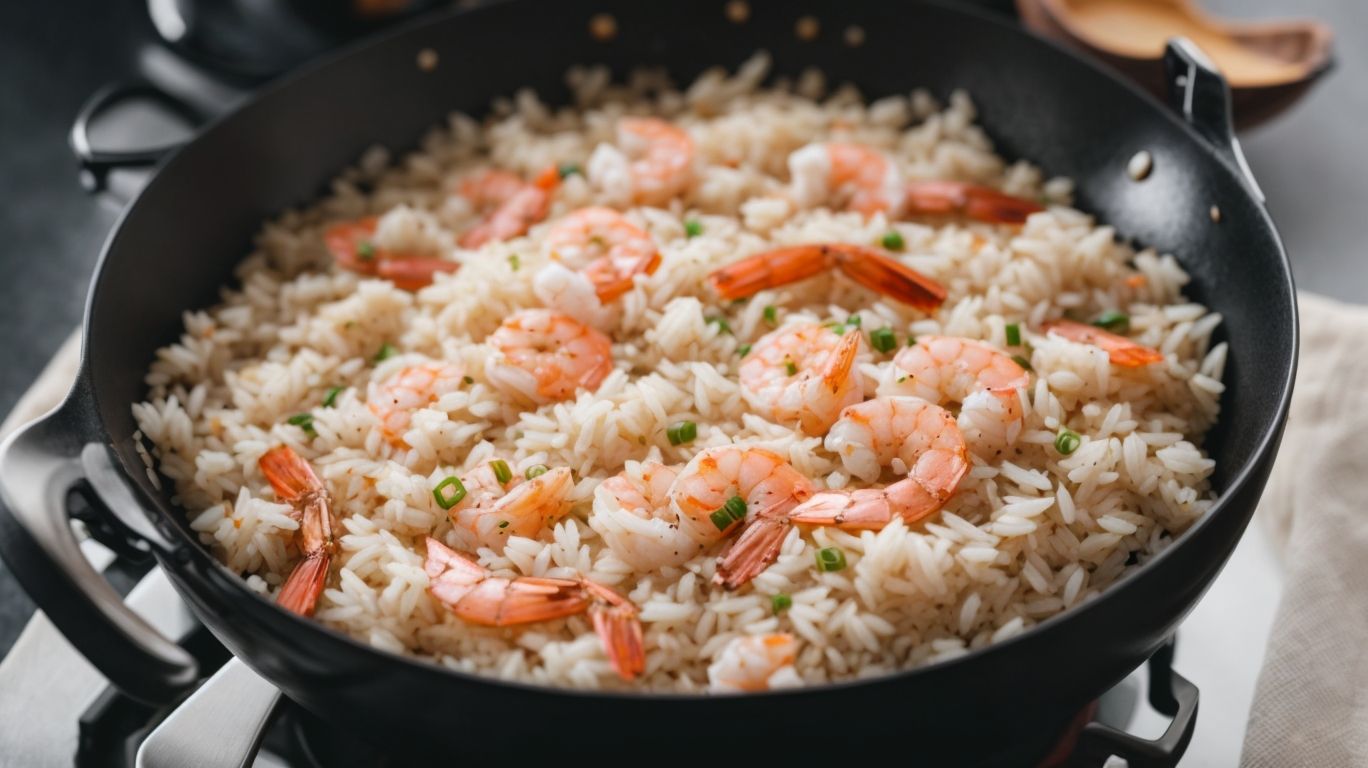
Credits: Poormet.Com – Randy Martin
Properly cooking the rice is a critical step in preparing shrimp fried rice; choosing the right type of rice and following correct cooking methods are essential for achieving the desired texture and consistency.
In terms of selecting the ideal rice variety, long-grain rice is often recommended for fried rice due to its ability to maintain a separate, fluffy texture when cooked. Basmati and jasmine rice are popular choices that offer a fragrant aroma and delicate flavor to the dish. To ensure perfectly cooked rice, it is crucial to rinse the grains thoroughly before cooking to remove excess starch. Boiling the rice in a precise water-to-rice ratio and allowing it to simmer gently until all the liquid is absorbed results in grains that are neither too mushy nor too firm.
Choosing the Right Rice
Selecting the right type of rice is crucial for shrimp fried rice; opt for varieties that offer a balance of texture, absorbency, and flavor to complement the dish.
When choosing rice for fried rice dishes, long-grain rice varieties like jasmine or basmati work well due to their fluffy texture and ability to stay separate when cooked.
Alternatively, medium-grain rice such as sushi rice lends a stickier consistency, perfect for clumping together the ingredients while still maintaining a chewy bite.
Short-grain rice like Arborio can provide a creamy texture ideal for creamy fried rice variations.
Cooking the Rice
Cooking the rice to perfection involves following precise methods to ensure the grains are fluffy, separate, and seasoned adequately for incorporation into shrimp fried rice.
“
In terms of cooking rice, there are two primary methods that are commonly used: absorption and steaming. The absorption method, often utilized for traditional dishes like pilaf or risotto, involves cooking the rice in a specific amount of water, allowing it to absorb all the moisture. On the other hand, steaming involves cooking the rice above boiling water, ensuring that the grains are cooked through gentle steam.
To cook rice using the absorption method, start by rinsing the rice in a colander under running water until it runs clear to remove excess starch. Next, add the rinsed rice to a pot with the correct amount of water based on the type of rice being used. Cover the pot and bring it to a boil, then reduce the heat to low and let it simmer until all the water is absorbed.
For the steaming method, you’ll need a pot with a steamer insert or a rice cooker specifically designed for steaming rice. Add the proper amount of water to the bottom of the pot, place the rice in the steamer basket, cover, and cook until the rice is tender.
To achieve optimal rice consistency, ensure that you measure the water precisely and follow the recommended rice-to-water ratio. Letting the rice sit covered off the heat for a few minutes after cooking helps to steam and finish the grains perfectly.
Remember to season the rice with a pinch of salt or other desired seasonings before cooking to enhance its flavor and complement the dishes it will be paired with. By mastering these techniques and tips, you can consistently create delicious, fluffy rice that elevates your shrimp fried rice and other culinary creations to the next level.
How to Make the Fried Rice?
Creating flavorful shrimp fried rice involves preparing the vegetables and eggs, stir-frying the rice with a combination of key ingredients, and adding succulent shrimp for a delightful dish.
Gather your ingredients including diced carrots, peas, and green onions. Chop the vegetables uniformly for even cooking. Beat a couple of eggs in a small bowl and set aside.
Next, heat a wok or large skillet over high heat and add oil. Stir-fry the vegetables until they are slightly tender but still crisp. Push the vegetables to the side of the pan and pour the beaten eggs into the open space. Allow them to cook briefly before gently scrambling them.
Once the eggs are cooked, incorporate them with the vegetables. Now, it’s time to add cooked rice to the pan. Day-old rice works best for fried rice, as it’s drier and less likely to stick together. Break up any clumps of rice with a spatula and combine thoroughly with the vegetables and eggs, ensuring the rice is evenly coated.
Season the rice mixture with soy sauce, sesame oil, and a pinch of salt and pepper. Continuously stir the rice to prevent burning and to distribute the flavors evenly. Push the rice to the sides of the pan to create a well in the center for the shrimp.
Season the shrimp with salt, pepper, and a bit of garlic powder. Add the shrimp to the center of the pan, cooking until they turn pink and opaque, indicating they are done. Incorporate the cooked shrimp into the rice mixture, gently folding them in without breaking up the delicate seafood.
Preparing the Vegetables and Eggs
Chopping and sautéing the vegetables, along with scrambling the eggs, are essential steps in prepping the ingredients for shrimp fried rice, adding layers of flavor and texture to the final dish.
In terms of vegetable chopping, the uniformity of the cuts plays a crucial role in ensuring even cooking and a visually appealing presentation.
Consistent chopping
not only aids in the cooking process but also elevates the aesthetics of the fried rice. Sautéing the vegetables to the right degree of doneness brings out their natural sweetness and adds depth to the overall dish. Meanwhile, mastering the art of egg scrambling is key to achieving that velvety texture that complements the rice grains perfectly. The combination of these techniques brings harmony to the flavors and textures in each bite, creating a delightful gastronomic experience.
Cooking the Fried Rice
Stir-frying the rice with a medley of vegetables, eggs, and succulent shrimp in a flavorful combination of soy sauce and sesame oil creates a delectable shrimp fried rice dish.
When preparing shrimp fried rice, it is crucial to ensure that the rice used is slightly dried out, as freshly cooked rice tends to be too moist for stir-frying, resulting in a clumpy texture. Incorporating ingredients like green peas, carrots, and green onions not only enhances the visual appeal but also adds a delightful mix of flavors to the dish.
As the shrimp cook quickly, it is recommended to stir-fry them separately before adding them back to the rice towards the end of the cooking process to prevent overcooking. The key to achieving that sought-after umami flavor lies in the proper balance of soy sauce, sesame oil, and a hint of garlic for that extra kick.
Adding the Shrimp
Incorporating the cooked shrimp into the stir-fried rice mixture at the right moment ensures that the seafood remains tender, succulent, and perfectly blended with the other ingredients in the dish.
When adding the shrimp to the sizzling wok filled with vegetables and rice, it’s crucial to do so towards the end of the cooking process to prevent the shrimp from becoming rubbery.
By cooking the shrimp separately before adding them to the rice, you can control their texture and flavor, ensuring they are just right when mixed in.
This method also allows the shrimp to retain their natural juices, adding a burst of freshness to each bite of the flavorful fried rice.
Tips and Tricks for the Perfect Shrimp Fried Rice
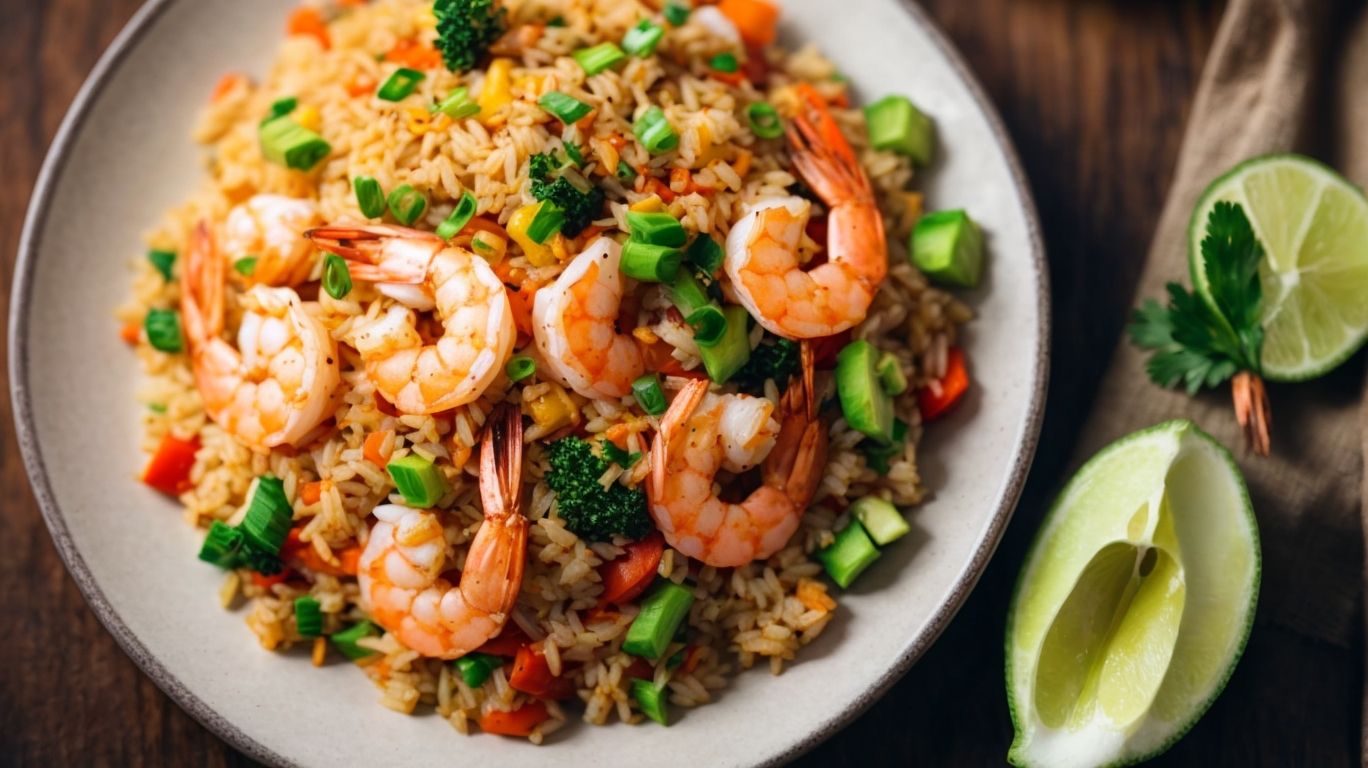
Credits: Poormet.Com – Roy Taylor
To elevate your shrimp fried rice to the next level, consider using day-old rice, controlling shrimp cooking time, adding a touch of spice, and garnishing with fresh green onions.
When preparing the rice, ensure that it is cooked and cooled beforehand, as day-old rice works best for fried rice dishes, providing a firmer texture and preventing it from turning mushy during cooking. For perfectly cooked shrimp, remember to cook them just until they turn pink and opaque, avoiding overcooking which can result in a rubbery texture.
Experiment with different spices like ginger, garlic, and soy sauce to add depth of flavor to your dish. You can also customize your fried rice by incorporating vegetables such as peas, carrots, or bell peppers for added color and nutrition.
To enhance the presentation, consider topping your shrimp fried rice with a sprinkle of sesame seeds or chopped peanuts for a satisfying crunch. A drizzle of sesame oil before serving can amplify the overall taste profile.
Use Day-Old Rice
Utilizing day-old rice in shrimp fried rice helps achieve an ideal texture and prevents the dish from becoming too mushy, as the grains have had time to dry out and can better absorb flavors.
When rice is freshly cooked, it tends to be soft and sticky, which can result in a clumpy texture when used in fried rice.
Day-old rice, on the other hand, has cooled and slightly dehydrated, allowing it to maintain a firmer texture and separate easily in the pan. This characteristic enables the grains to crisp up nicely without turning into a starchy mess.
Day-old rice acts as a blank canvas ready to soak up the aromatic flavors of the seasoning and ingredients in the dish. The grains have the capacity to absorb the sauces and spices more efficiently, enhancing the overall taste profile and ensuring that each bite is flavorful.
Don’t Overcook the Shrimp
Avoiding overcooking the shrimp is crucial in shrimp fried rice to ensure that the seafood remains tender, succulent, and flavorful without becoming rubbery or tough.
Monitoring the shrimp cooking time is key to achieving the perfect texture. Look for visual cues that indicate doneness, such as the shrimp turning pink and opaque. Remember that shrimp continue to cook even after removing them from the heat source, so slightly undercooking them is preferable to prevent overcooking.
To integrate perfectly cooked shrimp into fried rice, stir-fry them separately until just cooked, then add them to the rice towards the end of the cooking process. This method ensures that the shrimp stay juicy and retain their natural sweetness in each bite.
Add Some Spice
Infusing a touch of spice into your shrimp fried rice can elevate the dish’s flavor profile, adding depth, heat, and a personalized touch to suit individual preferences.
In terms of spicing up your fried rice, options like chili flakes or a drizzle of fiery sriracha can provide that extra kick needed. These spices not only enhance the overall flavor but also bring a subtle heat to the dish, creating a harmonious balance of flavors.
To maintain a moderate heat level, consider using a blend of mild and spicy spices, like a dash of cayenne pepper along with some paprika. This combination allows you to control the intensity of the heat without overpowering the other ingredients. Experimenting with different spice combinations can help you discover your ideal flavor profile for the perfect shrimp fried rice.”
Garnish with Green Onions
Adding fresh green onions as a garnish to your shrimp fried rice not only enhances the dish’s visual appeal but also contributes a fresh, aromatic flavor that complements the overall taste.
Green onions, also known as scallions or spring onions, are a versatile ingredient that adds a pop of color and freshness to any dish. When used as a garnish on shrimp fried rice, they provide a vibrant contrast to the dish’s golden hues.
In terms of flavor, green onions offer a mild onion taste with a hint of freshness and a subtle bite. They are particularly beneficial in balancing the richness of the shrimp and rice, creating a harmonious flavor profile.
To elevate the presentation of your shrimp fried rice, consider finely chopping green onions and sprinkling them on top just before serving. This not only adds visual interest but also imparts a burst of flavor with each bite.
If you want to infuse the dish with a stronger green onion flavor, you can sauté them with the shrimp and rice, allowing their essence to permeate the entire dish. This technique enhances the overall taste while incorporating the essence of green onions throughout the entire meal.

